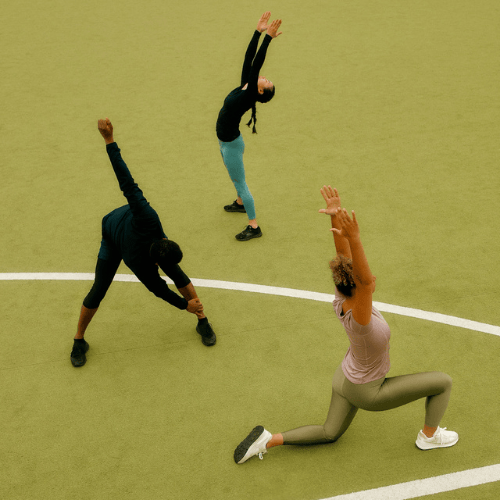What if we started to see more inclusive images all around us?

Although 2022 has been a time of heightened awareness for racial injustice, diversity is not limited to race. Diversity mandates the inclusion of people of all races, ages, sizes, genders, sexual orientations, social classes, religions, and other differences.
In many ways, the photos we see in the media have created our culture for us, and have defined the standards of who and what is supposedly good, normal, and valuable. However, the media is not as inclusive of everyone as it could be due to biases, prejudices, and stereotypes that have been passed down for generations. Because of this, the images we consume are not an accurate depiction of reality.
The majority of the photos we see feature primarily Caucasian (or white) people who are typically young, attractive, straight, and able-bodied. And if the photos are meant to portray strength, power, leadership, or heroism, the main subject is usually male. This archetype serves as our “default,” as if it is what we are meant to strive for. Obviously, most of us do not fit this description, and real people are much more diverse than what our media projects. White people are most often depicted as the “main” characters, with minorities, underrepresented groups, people with disabilities, and sometimes women, shown as supporting characters.

Images that are not representative of everyone and that preserve the status quo are problematic because they perpetuate the inequalities of society. They can negatively affect how we see ourselves and our perceived worth if we don’t fit into the narrow “ideal” demographic that has been created for us. As Nicole Martins of Indiana University states in this HuffPost article, “There’s this body of research and a term known as ‘symbolic annihilation,’ which is the idea that if you don’t see people like you in the media you consume, you must somehow be unimportant.”
In order to avoid offending someone in your audience, ask yourself: Are your ads — deliberately or unintentionally — showcasing one type of consumer? Are all of your target markets represented in the images you are using? What processes are in place to ensure that your ads aren’t insensitive or otherwise offensive? Sephora is a brand that has consistently broken barriers by running campaigns that are drastically different from other advertisements in the beauty industry, which typically feature professional models with “conventional beauty.” In order to celebrate diversity, the beauty powerhouse featured 10 employees of varying backgrounds in order to demonstrate, according to InStyle, “a shift in focus on embracing individuality rather than selling… [This campaign] falls in line with the number of brands who have made strides recently to be more inclusive with both their product offerings and campaign imagery.”
Besides the fact that being inclusive is just the moral thing to do, from a business perspective, celebrating diversity in advertisements has the potential to generate tangible returns. Embracing a diverse mindset can be good for business. A Google study found that 64% of those surveyed said they took some sort of action, including purchase after seeing an ad that they considered to be diverse or inclusive.

Take Fenty Beauty, a cosmetics brand founded by Rihanna and owned by Kendo, a division of LMVH, that bills itself as “the new generation of beauty”. The brand took the makeup world by storm at its 2017 launch by revealing a collection of 40 shades of foundation for people of all complexions. At this time, a collection this extensive, especially for a new brand, had not been done.
By partnering with community members of varied ages, ethnic backgrounds, body sizes, and life states, you can spark directly to different parts of your clientele. People are often followed by others with similar backgrounds to their own. Your community members have followers of their own who consciously or not, look to them specifically for recommendations on products and services. If someone speaks highly of your brand or product, similar-minded people are likely to follow.
It is necessary now more than ever to strive to set an example not just for the business but to understand why diversity in advertisements matters now more than ever to change the lens through which we all see the world.

.webp)
.png)

.png)
.png)



